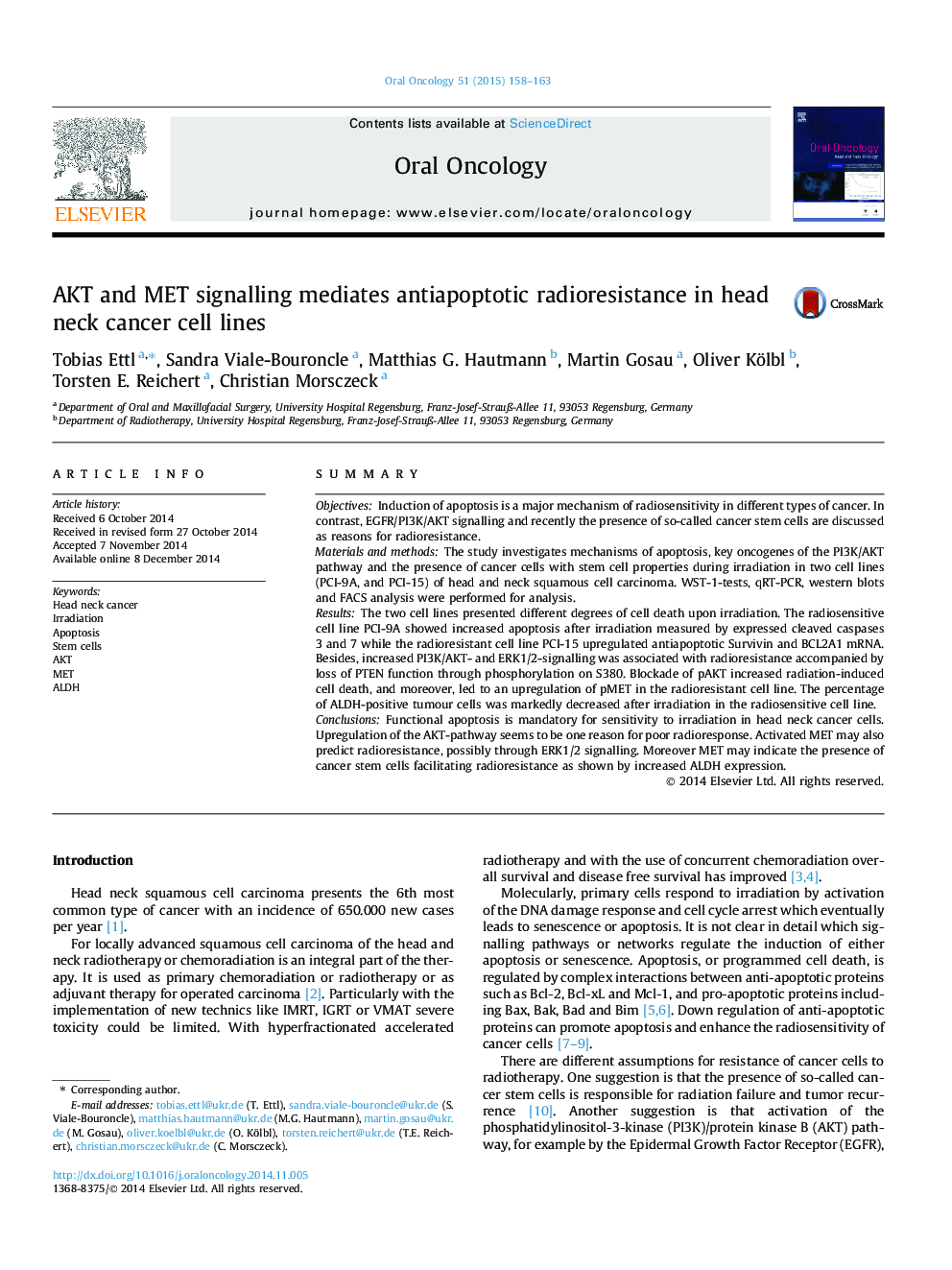| Article ID | Journal | Published Year | Pages | File Type |
|---|---|---|---|---|
| 6054864 | Oral Oncology | 2015 | 6 Pages |
SummaryObjectivesInduction of apoptosis is a major mechanism of radiosensitivity in different types of cancer. In contrast, EGFR/PI3K/AKT signalling and recently the presence of so-called cancer stem cells are discussed as reasons for radioresistance.Materials and methodsThe study investigates mechanisms of apoptosis, key oncogenes of the PI3K/AKT pathway and the presence of cancer cells with stem cell properties during irradiation in two cell lines (PCI-9A, and PCI-15) of head and neck squamous cell carcinoma. WST-1-tests, qRT-PCR, western blots and FACS analysis were performed for analysis.ResultsThe two cell lines presented different degrees of cell death upon irradiation. The radiosensitive cell line PCI-9A showed increased apoptosis after irradiation measured by expressed cleaved caspases 3 and 7 while the radioresistant cell line PCI-15 upregulated antiapoptotic Survivin and BCL2A1 mRNA. Besides, increased PI3K/AKT- and ERK1/2-signalling was associated with radioresistance accompanied by loss of PTEN function through phosphorylation on S380. Blockade of pAKT increased radiation-induced cell death, and moreover, led to an upregulation of pMET in the radioresistant cell line. The percentage of ALDH-positive tumour cells was markedly decreased after irradiation in the radiosensitive cell line.ConclusionsFunctional apoptosis is mandatory for sensitivity to irradiation in head neck cancer cells. Upregulation of the AKT-pathway seems to be one reason for poor radioresponse. Activated MET may also predict radioresistance, possibly through ERK1/2 signalling. Moreover MET may indicate the presence of cancer stem cells facilitating radioresistance as shown by increased ALDH expression.
